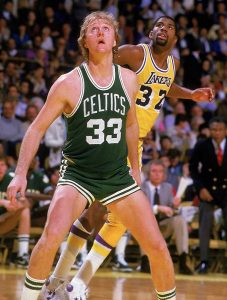What if I told you that in 2002, baseball was revolutionized by mathematics? Would you believe me? Well, nobody at that time believed that Billie Beane’s statistical methods would change the way player acquisition works in the MLB. And nobody imagined the success that this statistic-minded system would generate for the Oakland Athletics in the historic 2002 season. Billie Beane managed, against all odds, to beat the money-driven system that reined in the Major League Baseball and proved the world wrong.
Billie Beane grew up playing and learning about baseball. He was a big prospect during his youth and by the time he was in college, he received an offer from the New York Mets to play in the big leagues. He chose baseball and money over his studies, and that is how he entered the MLB. Many years later, Beane said that this decision was the only one he would do just for the money.1 And even though he didn’t have a successful career as a player, he did shine as a general manager.

In his fifth year as a general manager for the Oakland Athletics, Beane decided he had had enough. The team had really been struggling; free agents were leaving and the results were discouraging season after season. The Athletics were one of the poorest teams in the league, so they did not have the budget to acquire the top free agents in the market (see image 1). And right before the beginning of the 2002 season, Beane and his assistant, Paul DePodesta, sat down and found a way to create a playoff contender team with the small budget they had available.
DePodesta wasn’t the usual general manager’s assistant. And that is one of the reasons why Beane was so successful when implementing his new approach to the game. But why did Beane have an Economics graduate from Harvard as his assistant? He did know a lot about baseball, but what made him different from other assistants was his analytical approach to the game. He saw the baseball-player market from a different perspective, and that is why he could see what other scouts couldn’t. That is why he was able to find the players Beane needed, in order to show the world that money wasn’t everything. But, why did people think that having a huge payroll was the key to winning baseball games?2
The Major League Baseball at the time was thought to be money-driven. Many argue that every sport is so driven in the modern era. And during the final years of the twentieth century, MLB salaries were increasing rapidly.3 Big teams, like the New York Yankees and the Boston Red Sox, had the budget to buy the top free agents of the league. That is why Beane wanted his team to stop trying to do what the big teams were doing. They simply didn’t have the same kind of money. In fact, the Oakland Athletics had almost the lowest payroll in the league. This is why Beane focused on finding players that had not yet been noticed but were consistent and cheap. So, how did Beane and DePodesta make this system work?
As the 2002 MLB draft was approaching, Beane and DePodesta started analyzing players. Instead of focusing on judgments from experts, like scouts and coaches, they focused on undervalued players that showed potential on unexplored areas of the game (overlooked and undervalued stats). This lead to skepticism from the organization and from the fans around the world. However, Beane’s determination, which jeopardized his job, proved to be stronger than all the criticism he had to face at the beginning of the season.4

Baseball is a statistical sport, and it regularly generates statistical information about players. There are several ways to measure a player’s offensive productivity in baseball. The most common measure of productivity at the bat is called the batting average. This average is simply the ratio of hits to the amount of times a player is at-bat. This measurement, along with the slugging percentage (total bases divided by at-bats) were regularly used by coaching staffs around the league to determine the value of a player. However, these measurements don’t take into consideration the sacrifices and walks a player gets. By ignoring these other statistics, coaches and managers often missed a lot of information about the players they were acquiring. Beane, instead of focusing on the popular measurements, focused on acquiring players with a high on-base percentage (how often a player receives a walk). This was crucial for the system to work, given that on-base percentage was greatly undervalued at the time. It allowed Beane to create a team with disciplined hitters without spending too much money, which proved to be key for the Athletics’ success.5
One of the first moves Beane made before the 2002 season was drafting David Beck, a low-key player that went unnoticed by most of the teams. He was the first draft pick that came out of Beane’s new system. He then fired his head scout and used the amateur draft to acquire cheap players. Before the 2002 draft, Beane’s scouts were ordered to not even consider acquiring high school players, because there were few statistics about their game. Beane told everyone to stop focusing on the strong hitters and asked for consistency. An example of this approach is Mark Teahen, a player DePodesta liked due to his consistency to get on base. And so, Beane created a shortlist of players who were not seen as MLB material. Some of them were overweight, others were slow. And every time the scouts thought they had found a good candidate, their GM didn’t agree.6
After the 2002 draft was over, Beane managed to acquire most of the players on his wish list. Why? Because no other team wanted them. And as the season progressed, the Athletics used the same approach to trade players. This caused Beane to loose the organization’s trust and support. There were even times when he was questioned by DePodesta. However, he was a man with a mission; and for the first time, he knew exactly how to accomplish it.7
How did the new system impact the team? At first, morale was low and the team wasn’t getting the results Beane expected. However, as the season progressed and trades were made, good news started to happen. The true success came in the second half of the 2002 season. The trade for John Mabry, which was seen as irrational, really had a positive impact on the team’s results. Not long after acquiring him, Oakland passed from having a record of 20-25 to an astonishing record of 60-46.8 This 2002 season, the Oakland Athletics set a record for consecutive wins in the American League history (20 games). And they ended up the season with a remarkable 103-59 record.9

It is important to know that even though Beane and DePodesta were the first ones to implement this strategy in the world of baseball, their work was based on Bill James’ proposition. Bill James is known as “the father of sabermetrics.” He started writing about baseball statistics in the late 70s and he was the one who initially realized that GMs in the MLB weren’t using and interpreting statistic correctly. He even started a business with the sole purpose of measuring and publishing baseball statistics. Failing to create awareness on the subject, James had to wait until Billy Beane put his work in action.10
Even though the Oakland Athletics failed to win it all that season, Beane achieved his goal and created a playoff team. He demonstrated to the world and to himself that money wasn’t the only thing that mattered when it came to winning. This team gave a historic season to the city of Oakland and they set an example for teams around the league.
This style of management and scouting affected the league in several ways. The use of sabermetrics has increased over the years and now every team relies on it for their decision-making process. Thanks to technology, more statistics can be measured and managers and scouts have more input on a player’s value. When asked if the analysis of statistics and sabermetrics has improved the management of baseball, Bill James said: “I don’t know that it has, but we produce information, and information ties the fans to the game. People in a culture with no information about baseball have no interest in baseball.”11
Talking about Bean himself, the introduction of this method to the league and the 2002 season in general made him one of the most famous general managers in history. Even though some people said that the results were a matter of luck, Beane and DePodesta showed through their success that the decision-making process in the MLB needed to change. Beane was even offered the General Manager position for the Boston Red Sox, an offer that would have made him the highest paid general manager in history.12 However, as tempting as it sounded, Beane wasn’t able to sign the contract and leave his team behind. He continued to work with DePodesta in the city he loved and found joy in his work again, all this while redefining management in baseball.
- Michael Lewis, Moneyball: the art of winning an unfair game (New York: W.W. Norton, 2003), 15. ↵
- Michael Lewis, Moneyball: the art of winning an unfair game (New York: W.W. Norton, 2003), 18. ↵
- Jahn Hakes and Raymond D Sauer, “An Economic Evaluation of the Moneyball Hypothesis,” Journal of Economic Perspectives 20, no. 3 (2006): 180. ↵
- Jahn Hakes and Raymond D, “An Economic Evaluation of the Moneyball Hypothesis,” Journal of Economic Perspectives 20, no. 3 (2006): 180-182. ↵
- Jahn Hakes and Raymond D, “An Economic Evaluation of the Moneyball Hypothesis,” Journal of Economic Perspectives 20, no. 3 (2006): 174-175. ↵
- Michael Lewis, Moneyball: the art of winning an unfair game (New York: W.W. Norton, 2003), 25-35. ↵
- Michael Lewis, Moneyball: the art of winning an unfair game (New York: W.W. Norton, 2003), 25-35. ↵
- Michael Lewis, Moneyball: the art of winning an unfair game (New York: W.W. Norton, 2003), 166. ↵
- Sandy Mochamad and Utami Ami, “Analysis of Decision Making Process in Moneyball: The Art of Winning an Unfair Game,” Journal The Winners: Economics, Business, Management, And Information System Journal 16, no. 1 (2015): 59. ↵
- Michael Lewis, Moneyball: the art of winning an unfair game (New York: W.W. Norton, 2003), Chap 4. ↵
- Brian Costa, “Bill James and Billy Beane Discuss Big Data in Baseball,” Wall Street Journal (Online) 1 (September 2015): 15-17. ↵
- Michael Lewis, Moneyball: the art of winning an unfair game (New York: W.W. Norton, 2003), 230. ↵



40 comments
Christopher Morales
Most have seen the movie version of this story. You told a great story that put the story into a great historical context and brought truth to it. I never knew how true it was. How Oakland redefined the way baseball saw and scouted players. I think this was a big step to take out the bias part of the game that gave baseball players a certain look and opened it up to truly talented players.
Tyler Pauly
I really enjoyed this article and would note that since this article was written, analytics have played an even larger role in the sport. Today, the Rays embody the strategy that the Athletics introduced 20 years ago. They have one of lowest payrolls in the game of baseball, but also have one of the best teams. They rely on in-depth pitching numbers in order to fine-tune pitchers with potential into legitimate players. Without the contributions the Athletics made, the success the Rays are having today would not be possible. Also, I would like to point out that in some aspects in the game, analytics aren’t always the answer. There still is a necessary feel to the game of baseball and numbers don’t always measure the intangibles. So, while analytics have become an integral part of the game, numbers don’t always give you the complete picture.
Carlos Apodaca
This article did a great job in explaining the mathematical aspect of baseball and how statistics was able to revolutionize the game and how we see it. I believe what these guys did impacted many sports outside of baseball and it also impacted the fans. We are now able to watch the game from a different perspective and I believe due to their work a lot more peoples attention were caught with their new methods from mathematics and how it impactred the game.
James Disrud
I have always been a big fan of baseball and knew a little bit about the this situation. After watching the movie Moneyball I knew a little about billy bean, what he did to change the sport of baseball is amazing. He redefined the way that baseball was ran, and did it to his advantage. This article is well written and Does a very good job of explaining how baseball has changed.
Jake Mares
Amazing article! Being able to take a team with a smaller salary than ninety percent of the league and compete all the way to the playoffs is no easy feat. In fact, it almost seems impossible. The story of the Athletics parallels David and Goliath. Even though they did not win a World Series, the legacy of this team is known widely today through the movie Moneyball.
Tyler Caron
I always knew that the game of baseball was driven by math, but I had no idea that a team was put together with math. These managers were super smart about putting together this team. They knew they didn’t have the budget to get the big name players, but they could get players that were always consistent and played the game the correct way. This shows you that different managers or coaches have different ways to approach a team.
Kaleb Werku
These guys are the definition of trailblazers. They were not satisfied with the norm and they sought to make it better and this leads them to the discovery of a new statistical method. Despite the money hungry environment, they were in they did not let that stop them from doing what they thought was best for the future of the MLB. They are truly an inspiration.
Jacob Silva
As I have stated on many baseball articles, I know absolutely nothing about baseball, so this was a very informative read for someone like myself. It’s really neat to know how much impact statistics has on the game in general. Not only does it make the game itself interesting, it also categorizes and helps label individual players to highlight their strengths and weaknesses.
Gabriella Urrutia
This is a very interesting article. I don’t know much about baseball and this article did a good job at providing a lot of details about the sport. I find it very interesting that statistics is applied to baseball to help decide who are good players. It helps prove that math can be useful when it is applied to sports.
Nicholas Hatch
This article was very informing. It is crazy to think that the stats that separate the elite players from everyone else such as batting averages, RBI’s, or on-base percentages didn’t exist. Thankfully to Billy Beane, the game of baseball has been redefined. Although these stats can be confusing to someone who doesn’t watch a lot of baseball, it sure makes the game way more interesting. Very interesting article!